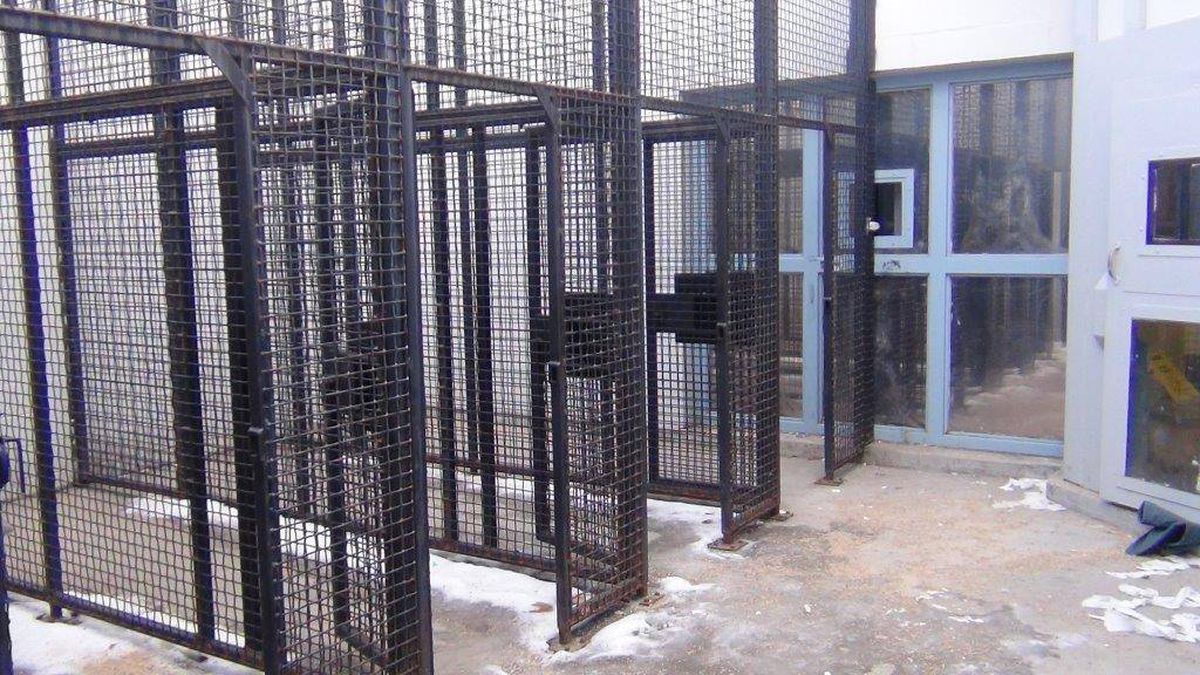
Outdoor yard at Edmonton Institution. Work to remove the exercise cages at Edmonton Institution was completed over the weekend, a spokesman says. OFFICE OF THE CORRECTIONAL INVESTIGATOR OF CANADA
Five kennel-like exercise pens for inmates in solitary confinement at a maximum-security federal prison were dismantled after a photo of their cramped confines appeared in The Globe and Mail.
Last week, federal correctional ombudsman Ivan Zinger called the pens at Edmonton Institution “outrageous” and said they had no place in modern corrections.
This week, Correctional Service Canada spokesman Jeff Campbell said that work to remove the cages at Edmonton Institution was completed over the weekend.
The pens were constructed around seven years ago to accommodate the various incompatible inmate groups that existed among a surging solitary population. With the total Correctional Service population in solitary declining from around 800 inmates three years ago to around 270 today, they could no longer be justified on that basis.
“The decision to remove them was made as part of the ongoing segregation policy reviews and the realization that CSC could manage the population without them,” Mr. Campbell said.
Dr. Zinger first became aware of the cages during a tour at the prison in January. He said he was appalled by the dimensions of the pens and expressed his views to Correctional Service Canada Commissioner Don Head, who was visiting Edmonton Institution at the same time.
It was only after his photo of the pens, which he took during his tour, was published in The Globe that he saw any action taken.
“Someone recognized that the photo was egregious and completely inconsistent with Canada’s place in the world as a leader on human rights,” Dr. Zinger said. “It really suggests to me that a picture is worth a thousand words.”
Mr. Campbell did not specify when the decision to remove the cages was made. As of last week, the Service confirmed that the cages remained “in existence.”
One large recreation yard will now replace the five divided cages that previously existed.
The cages were known as “dog runs” among staff and “kennels” among inmates. One former Edmonton Institution inmate, Lawrence DaSilva, estimated the dimensions of the cages at four metres by 1.5 metres and said that many inmates were too humiliated to use them, even if the refusal meant never leaving their cells.
“You feel like a dog,” Mr. DaSilva told The Globe. “That’s why it’s called a kennel cage.”
All inmates in solitary confinement – called administrative segregation within the Service – must be given the option of exercising outside their cells every day. Until this month, the out-of-cell time was capped at one hour. A new measure that came into effect on Aug. 1 doubled that outside time.
Last week, Terry Kupers, one of the world’s foremost experts on the mental toll of solitary confinement said that placing inmates in cages like the ones at Edmonton Institution had the effect of encouraging their criminality rather than forestalling it.
As a forensic psychiatrist with decades of experience in prison practices, he has found that relatively healthy people who enter solitary will often suffer from anxiety, panic attacks, memory loss, despair, suicidal thoughts, compulsive acts and uncontrollable rage leading to violent outbursts.
“I’m opposed to putting people in cages,” he said after viewing photos of the outdoor recreation pens for inmates in solitary confinement at Edmonton Institution. “It’s totally inhumane. Prisoners tell me it makes them feel like an animal. It will make their behaviour worse.”
In 2010, an inmate named Eddie Snowshoe tried out the recreation cages twice before deciding he preferred to remain in his cell. He died by suicide in that cell after spending 162 days in solitary confinement.
Since a 2014 coroner’s inquest into his death and a subsequent investigation by The Globe, the Correctional Service has introduced several measures to divert inmates with mental-health issues from solitary cells.
As part of the Aug. 1 rules changes, several categories of inmate are no longer admissible to segregation cells: those who are seriously mentally ill, imminently suicidal, self-harming, physically disabled, terminally ill or pregnant.
While the use of solitary confinement has declined within Correctional Service institutions over all, Edmonton Institution belongs to the sole CSC region where segregation admissions actually increased over the two most recent fiscal years. Segregation admissions in the Prairies region increased from 1,775 in 2015-16 to 1,949 a year later.
Similar pens are common in other parts of the world. Britain-based solitary-confinement researcher Sharon Shalev said she has seen them many times throughout the United States and that a few examples exist in Britain and New Zealand, as well.
“They are unacceptable and horrible,” Dr. Shalev said.
Patrick White
National Reporter
The Globe and Mail, August 15, 2017
